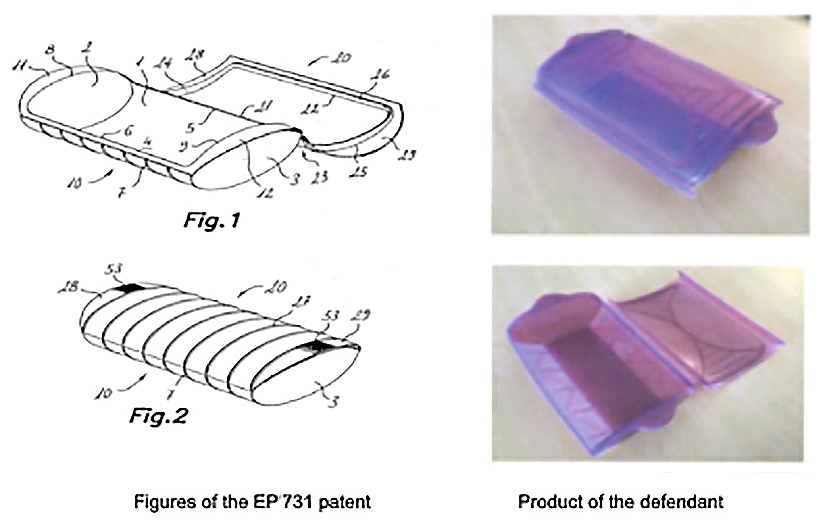[et_pb_section fb_built=”1″ _builder_version=”3.19.5″][et_pb_row _builder_version=”3.0.48″ background_size=”initial” background_position=”top_left” background_repeat=”repeat”][et_pb_column type=”2_5″ _builder_version=”3.0.47″ parallax=”off” parallax_method=”on”][et_pb_image src=”https://vidalquadrasramon.com/wp-content/uploads/2022/07/VQR_LAW_21.07.22-1.jpg” _builder_version=”3.19.5″][/et_pb_image][/et_pb_column][et_pb_column type=”3_5″ _builder_version=”3.0.47″ parallax=”off” parallax_method=”on”][et_pb_post_title comments=”off” featured_image=”off” _builder_version=”3.19.5″][/et_pb_post_title][et_pb_text _builder_version=”3.19.5″]
The Judgment of the Barcelona Court of Appeals (15th Section) of 30 March 2022 (ECLI:ES:APB:2022:3220) upholds the appeal against the Judgment handed down by Commercial Court No. 4 of Barcelona in a case for infringement of patent EP 2 193 731 B1 (“EP’731“) of the company Lékué, S.L., which refers to a utensil for containing foodstuffs applicable to cooking in a microwave oven.
The first instance judgment had rejected Lékué’s claim on the grounds that the defendant, the company Península 2000, S.A., did not infringe the EP’731 patent because its product had a flat channel-shaped bottom wall. On the other hand, according to the Court, the EP’731 patent referred to a kitchen case with a curved channel-shaped bottom wall. In order to reach that conclusion, it relied on certain paragraphs of the description and the drawings of the patent, which refer to this configuration as a solution to the technical problem of facilitating the cooking of the food inside the case.
However, the Appeal Judgment acknowledges that, during the examination of the patent before the European Patent Office, what was finally claimed was not a solution to that technical problem, but to a technical problem of stability, safety and grip of the container, which was also in the description of the patent and for which the shape of the bottom wall of the case was not relevant, but rather the configuration of its handles. Thus, the applicant amended the claims of his patent to adapt them to this technical problem. As for the bottom wall, since it was no longer relevant what configuration it had, this element was moved to the characterising part of claim no. 1 (independent) and the limitation that it be curved was eliminated.
Strictly speaking, the amendment of this technical feature meant an extension of the protection of the claim, but this was possible because the patent was still at the examination stage (Article 123(3) of the European Patent Convention), provided, however, that no subject matter extended beyond the content of the originally filed patent application (Article 123(2) of the European Patent Convention).
This is why the Barcelona Court of Appeals considers that the scope of protection of the patent should not be limited to a curved container taking only certain passages of the description and the drawings. Consequently, as the defendant’s product has a channel shape and reproduces the rest of the technical features of claim no. 1 of the patent, the defendant was considered to infringe patent EP’731.
In addition, the defendant was ordered to pay damages for the marketing of the infringing product. The defendant had argued that damages could not be claimed prior to the 5 years prior to the filing of the lawsuit, but the Court considered that, since the infringement was continuous and the case involved a patent claim, there was no such limitation.
The judgment is not final, since the defendant has lodged a cassation appeal with the Supreme Court, although its provisional enforcement may be requested.
[/et_pb_text][/et_pb_column][/et_pb_row][/et_pb_section]
